
Feel free to add tags, names, dates or anything you are looking for
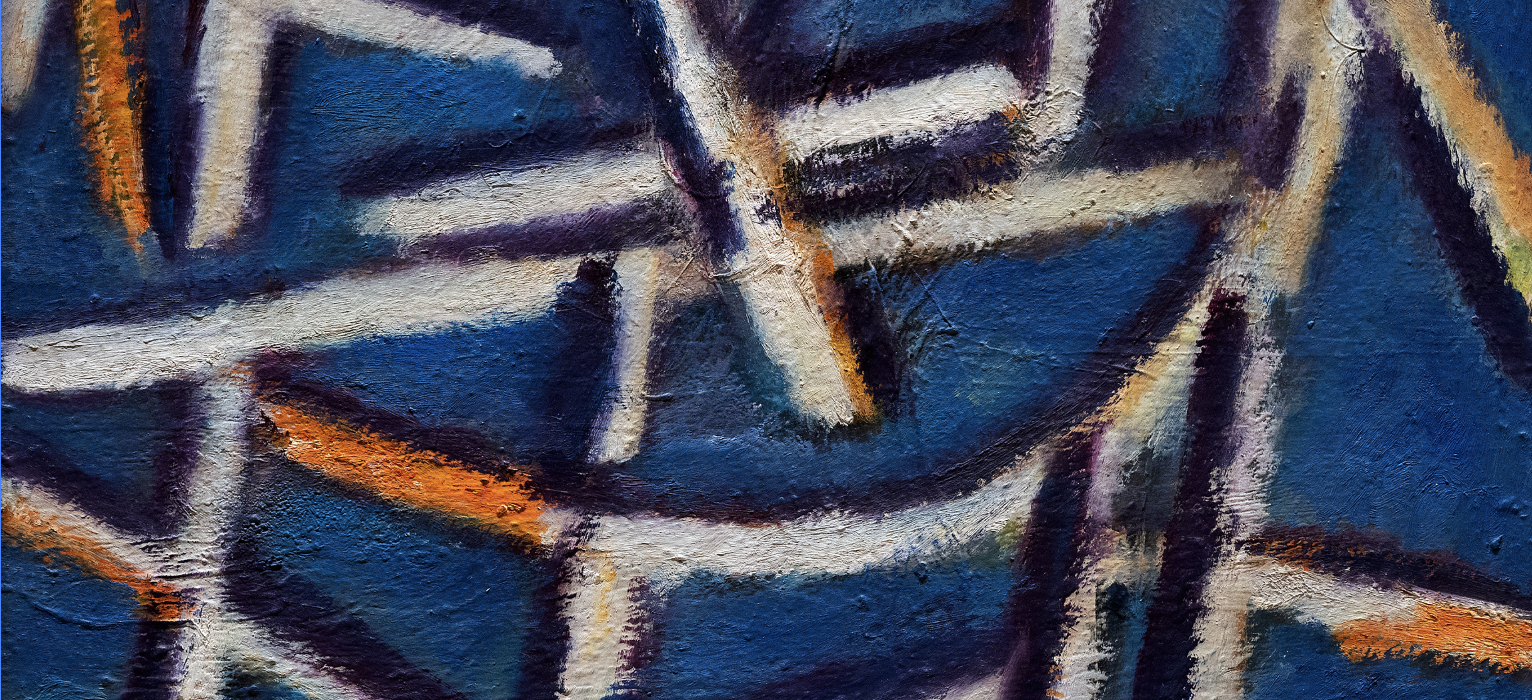
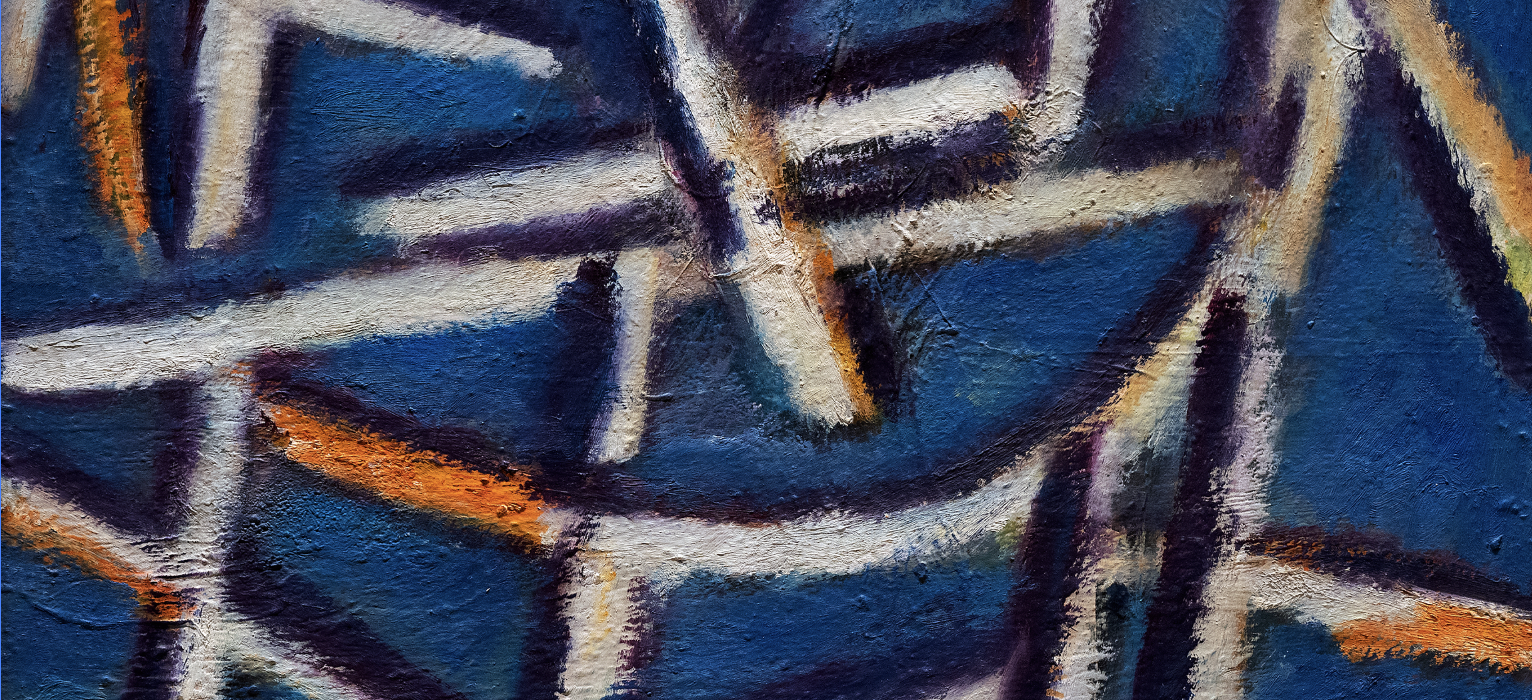
Sergo Chakhoiants belonged to the generation of artists of the 1950s, though it wasn’t until the 2000s that he gained recognition. His son, Alexander Chakhoiants, shared that the artist's lifelong dream was to hold a personal exhibition, a goal that remained unfulfilled. Sergo was deeply committed to his painting, spending more time in his studio than at home. His wife, an art critic, believed in his talent, and when Sergo was working, she often told their children not to disturb him. He never thought of his artistic subjectivism or distinctive style as exceptional, and often justified it to his family that he could not paint in any other way.
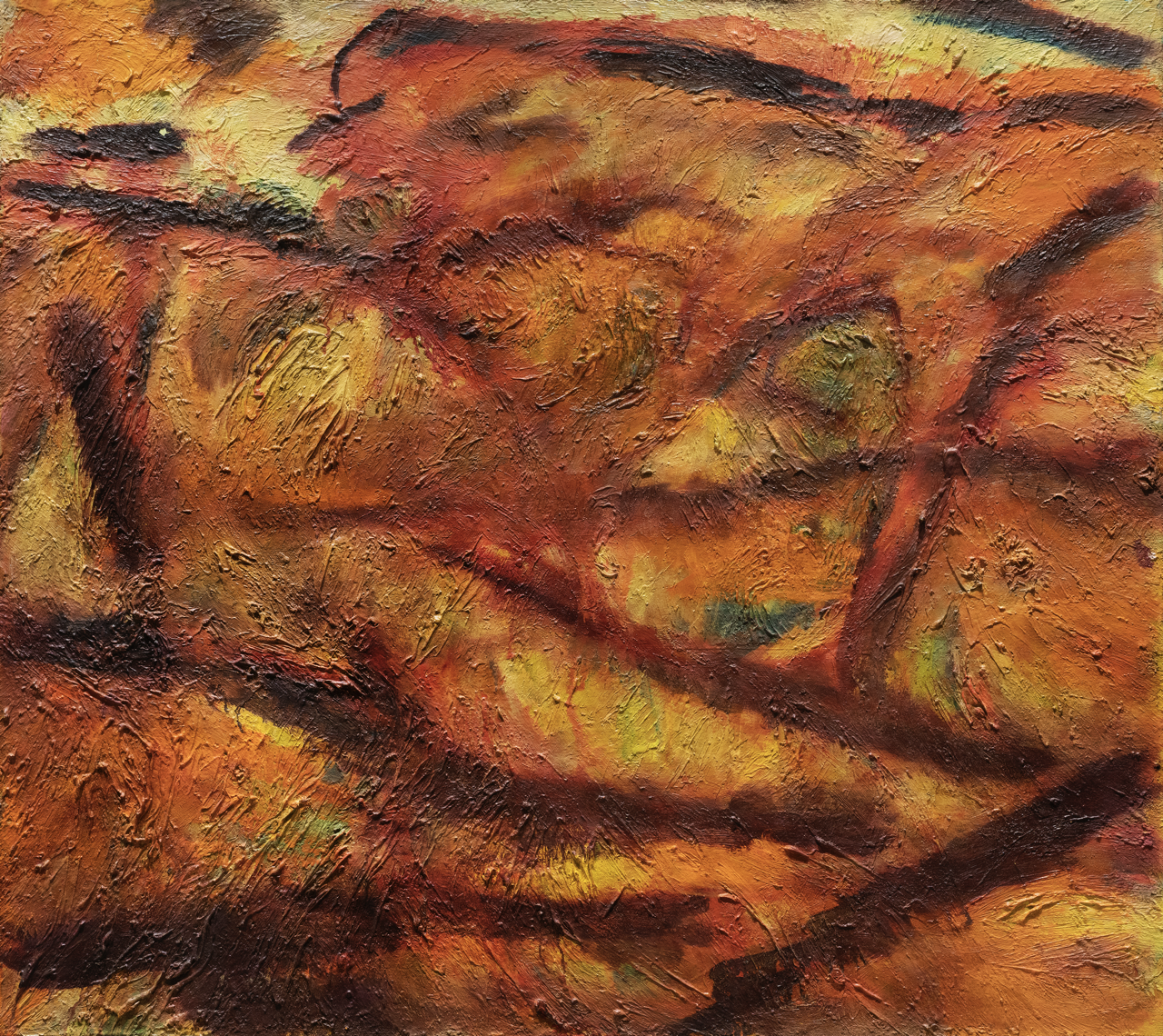
Sergo Chakhoiants. Landscape. Canvas, oil. 100x90. 1961-1963. This work is part of ATINATI Private Collection
In contemporary Georgian art circles, Sergo Chakhoiants is known as “Chakho,” a nickname first coined by Elguja Amashukeli. He collaborated with the art critic David Andriadze, who, in addition to praising Chakho’s professionalism, noted that he was an excellent football player.
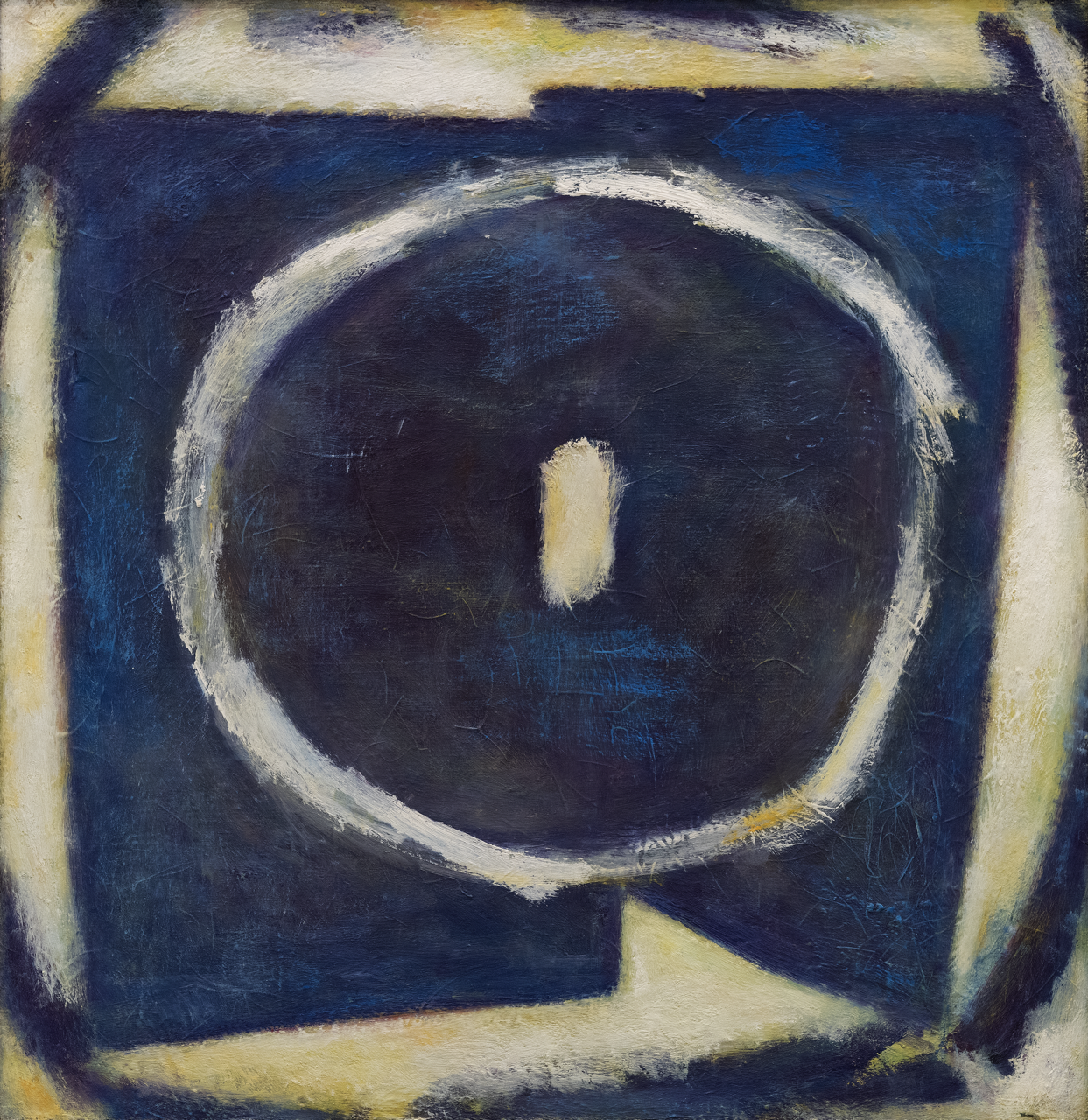
Sergo Chakhoiants. Closed Circle. Canvas, oil. 115x110. 1990s. This work is part of ATINATI Private Collection
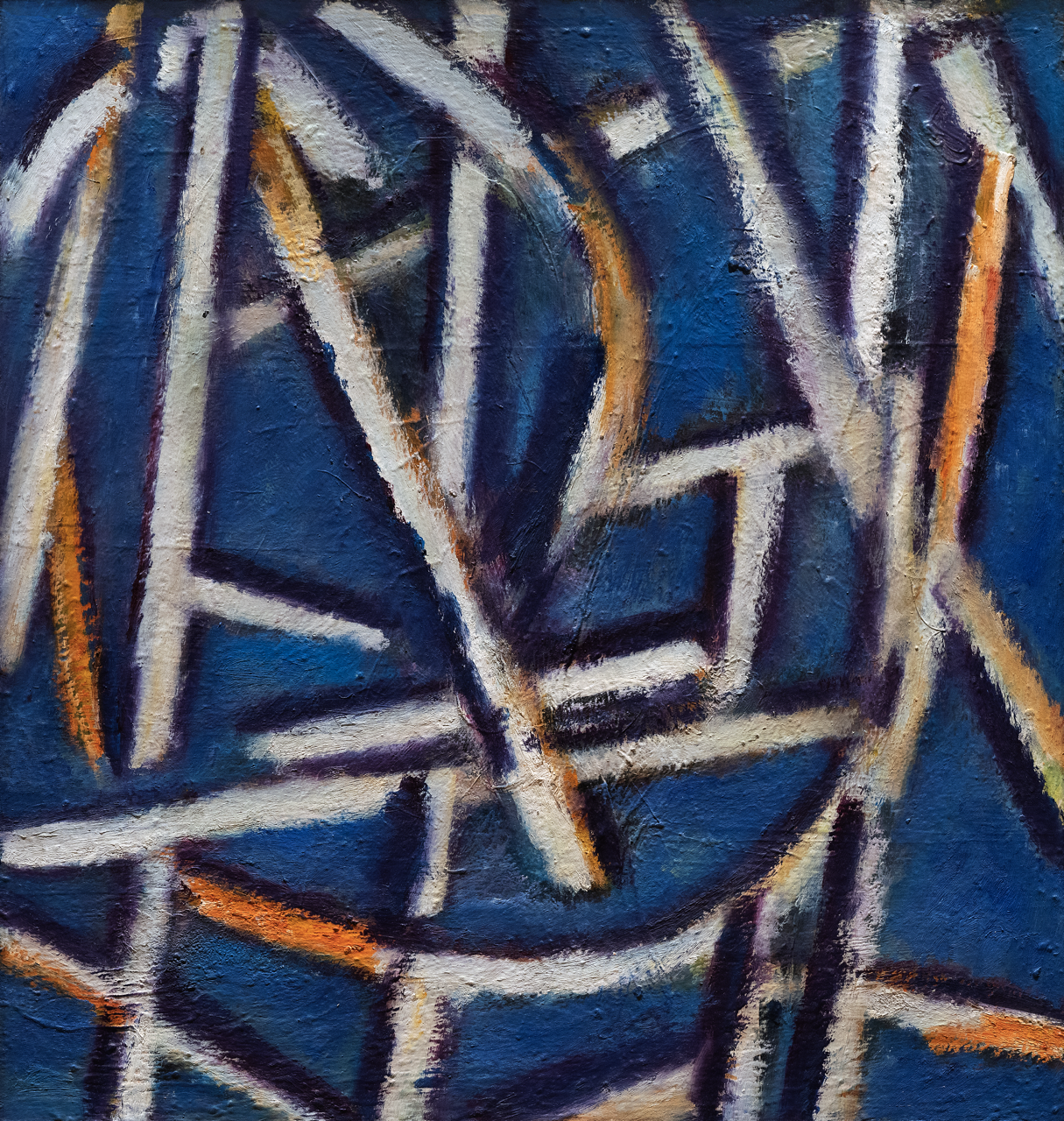
Sergo Chakhoiants. Composition. Canvas, oil. 90x85. 1990. This work is part of ATINATI Private Collection
Though known only within professional artistic circles, Chakho's disappearance, or what some perceived as deliberate neglect, sparked intrigue and discussion among art critics and gallerists. This was a result of the artist’s instense isolation and deep immersion in his own world, one that was free of conformism, nonconformism, egocentrism, and artistic coquetry.
Chakho's serial, continuous, and consistent images, each uniquely echoing the last, were a profound exploration of his inner world.
When Piko Nizharadze first viewed his exhibition, he captured Chakho's essence perfectly: “Chakho was a kind person; kind not only to people, but to nature itself.” The personal kindness and benevolence towards the world radiate from the artist’s dramatic black silhouettes.
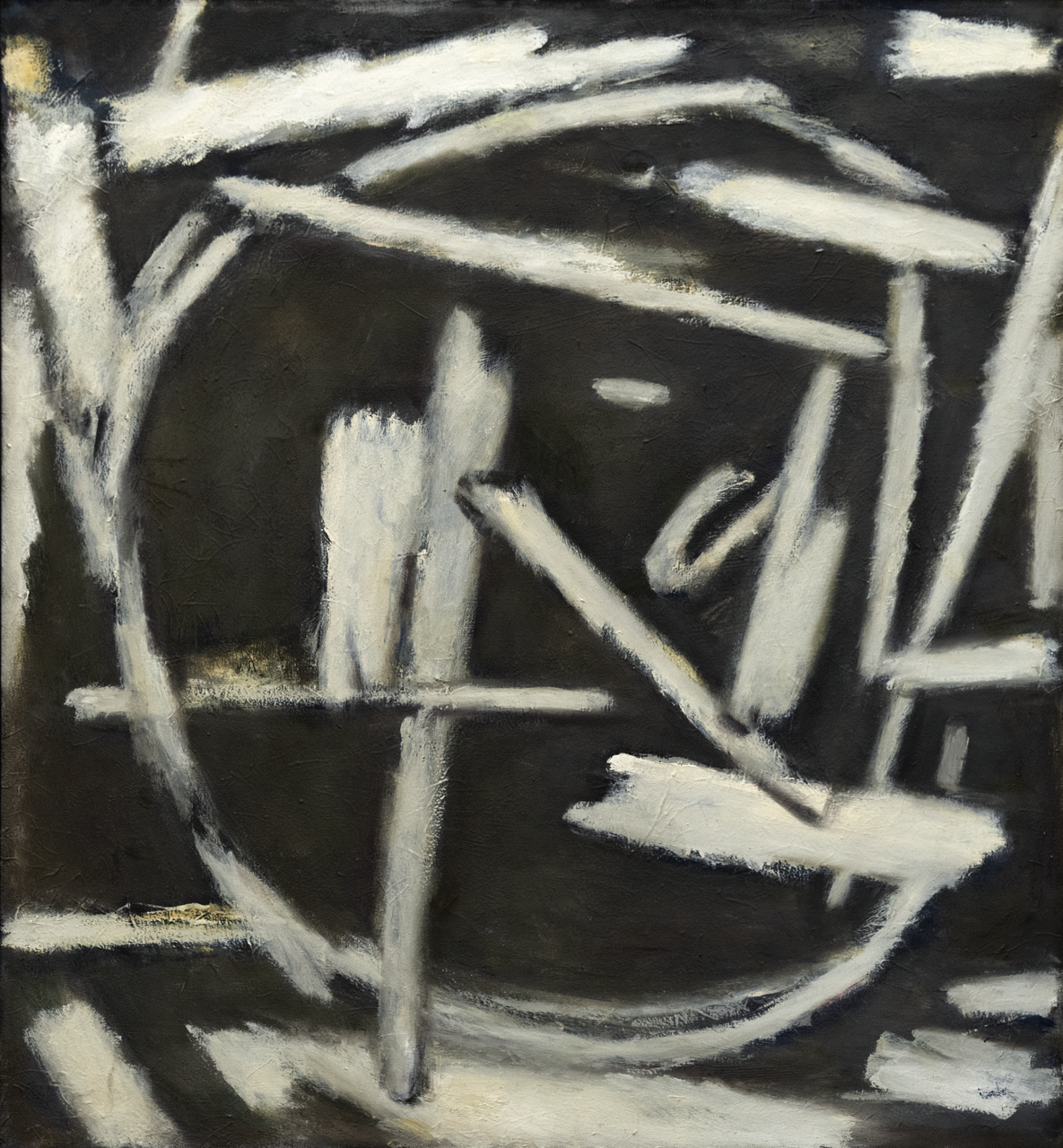
Sergo Chakhoiants. Composition. Canvas, oil. 120x110 cm. 1990s. This work is part of ATINATI Private Collection
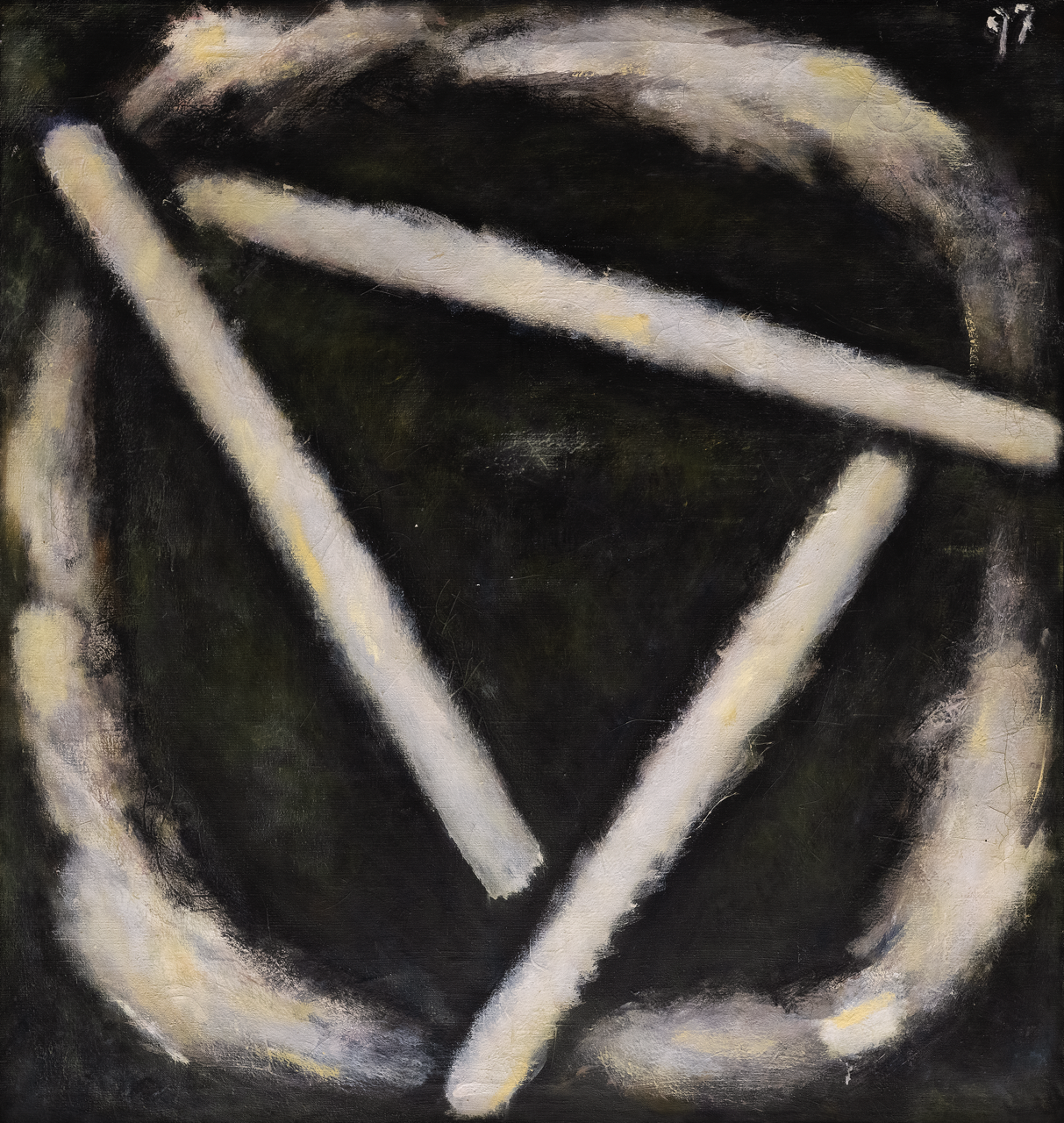
Sergo Chakhoiants. The visible circle of the planet. Oil, canvas. 120x125 cm. 1997. This work is part of ATINATI Private Collection
Sergo Chakhoiants was born in Zestaponi in 1924. He initially worked at the Zestaponi Ferroalloys Factory. He studied at the Tbilisi Academy of Arts from 1949 to 1954, under the tutelage of Sergo Kobuladze, Apollon Kutateladze, and Parna Lapiashvili. Under the guidance of Kutateladze, he created his diploma work, Steel Founders. In 1955, he became a member of the Georgian Artists Union. Chakho admired David Kakabadze, who praised him upon his academy entrance with the words: “My boy, never let go of that pencil!” These words say a lot.
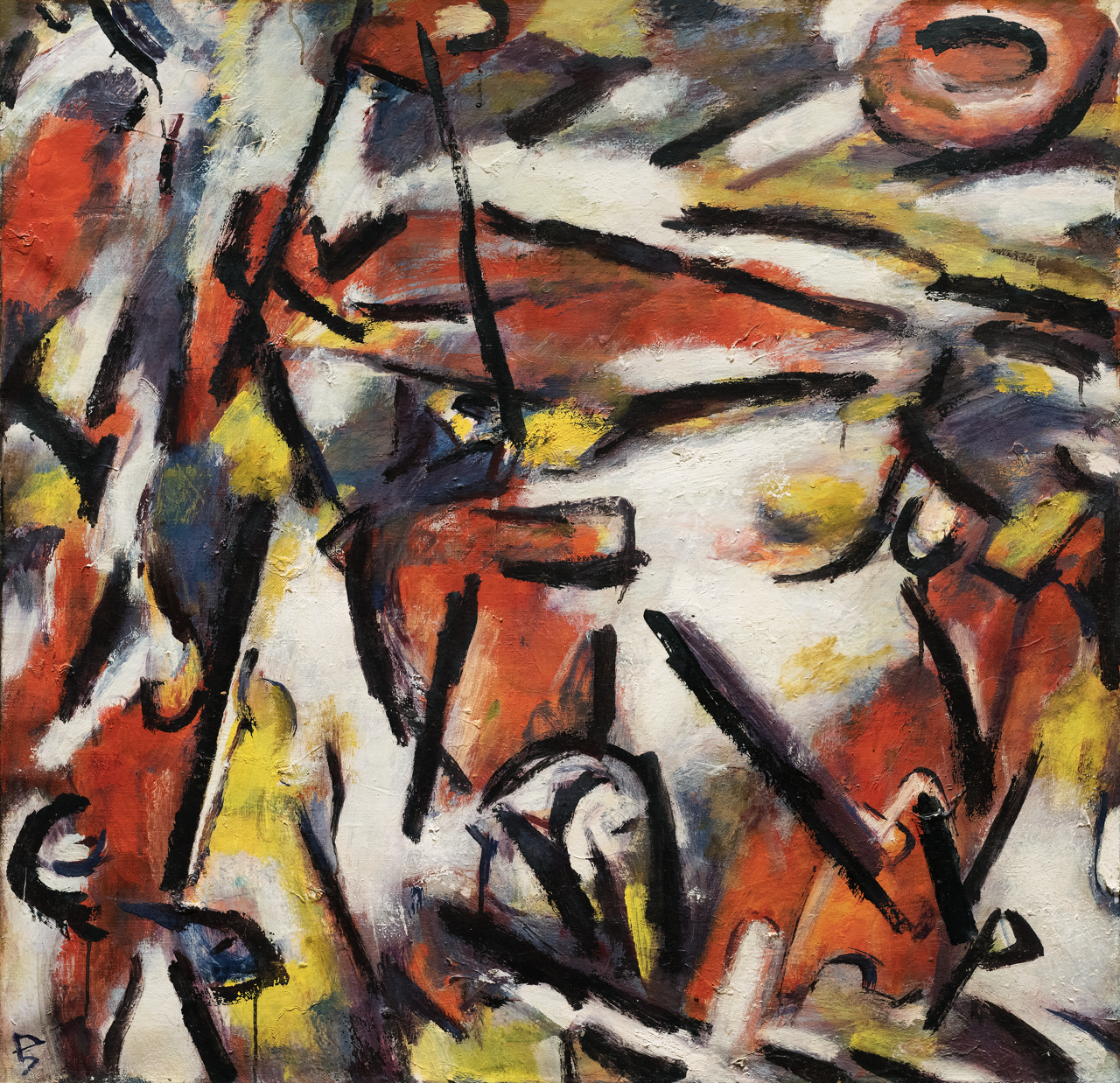
Sergo Chakhoiants. Composition. Canvas, oil. 97 X98. 2006. This work is part of ATINATI Private Collection
Sergo Chakhoyants cannot be easily categorized within the colloquial framework often used to describe the generation of artists from the 1950s and 1960s. His diploma work, influenced by the Soviet school and the impressionistic canvases he created during the 1950s and 1960s, demonstrates the classical development or self-determination of Chakho's early work. This creative search aligns with that of his contemporaries, among them Piko Nizharadze, Edmond Kalandadze, Jibson Khundadze, and Shura Bandzeladze. However, a key distinction lies in Chakho’s national cultural identity – his Armenian origin – which sets him apart from many of his contemporaries. While his works do not fit squarely within either the Georgian or Western artistic traditions, Chakhoiants' paintings present an entirely unique, figurative world. His works are not idealized, but are rather dramatic, emotional, and expressive, capturing deep psychological nuances. This psychological tonal palette became even more pronounced in works he created from the 1970s until his death.
The Tbilisi School of Painting unites Georgian and Armenian artists; among them Avto Varazi, Temo Japaridze, Lev Bayakhchev, Albert Dilbariani, and others. Despite the common stylistic and thematic line, Armenian art tends to be more passionate and dramatic, whereas Georgian is more moderate. This distinction is evident in Chakho's abstract or figurative works, which reflect the expressive and dramatic qualities of Armenian art, setting them apart from, for instance, Bandzeladze's style, which is relatively free, more moderate, and Western.
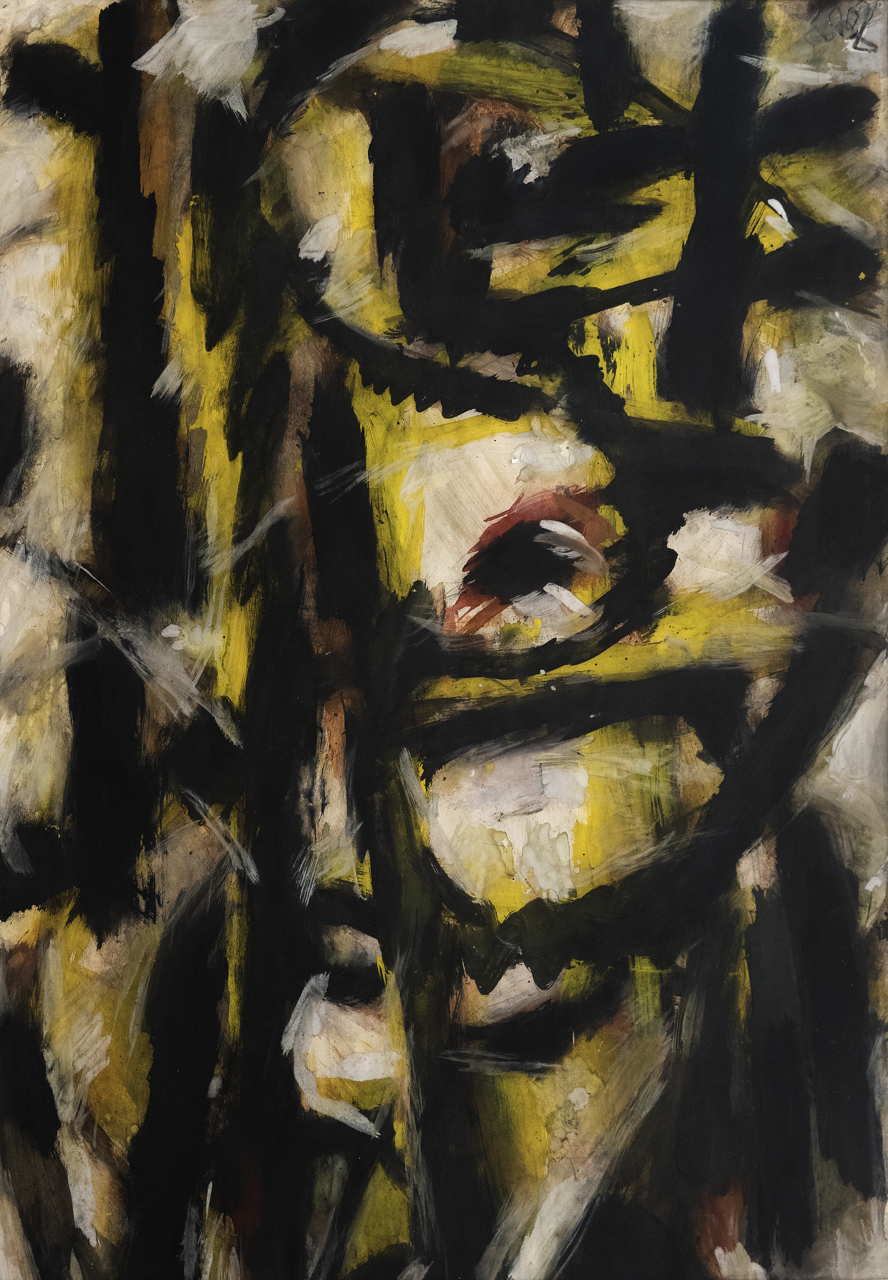
Sergo Chakhoiants. Abstraction. Paper, mixed media. 84x59. 2002. This work is part of ATINATI Private Collection
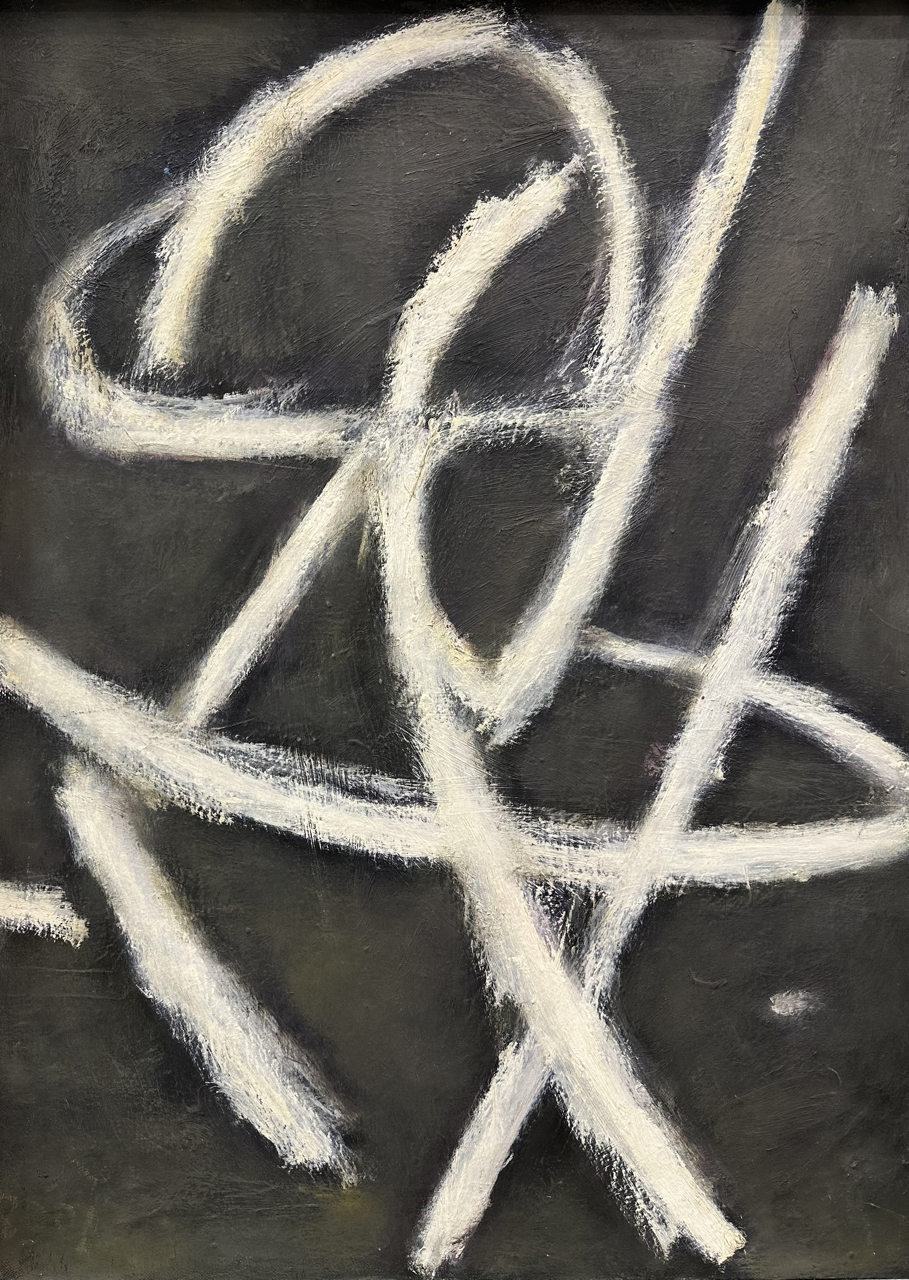
Sergo Chakhoiants. Composition. Canvas, oil. 109x8,5. 1990. This work is part of ATINATI Private Collection
Sergo Chakhoiants discovered his artistic style in the late 1960s and remained devoted to it for the rest of his life. His expressive world captures both the animate and inanimate, transforming fractured elements into unified wholes; looking to those places where the sun’s rays cannot reach. From the late 1960s onward, his style evolved and matured with each passing decade, striving for the end. His nudes, portraits, still lifes and landscapes are generalized; they are conditionally figurative. It is evident that Chakho, as an abstractionist, sought to reorganize the visible world through his perception and the logic of abstract art.
Chakho's thematic compositions in various genres seem to come out of twilight. The painting operates with technocratic precision, creating a sense of conviction and credibility. The artist localizes spots of contrasting colors against a background of moderate color palettes, ensuring the lighting remains low-frequency, intimate, and melancholic.
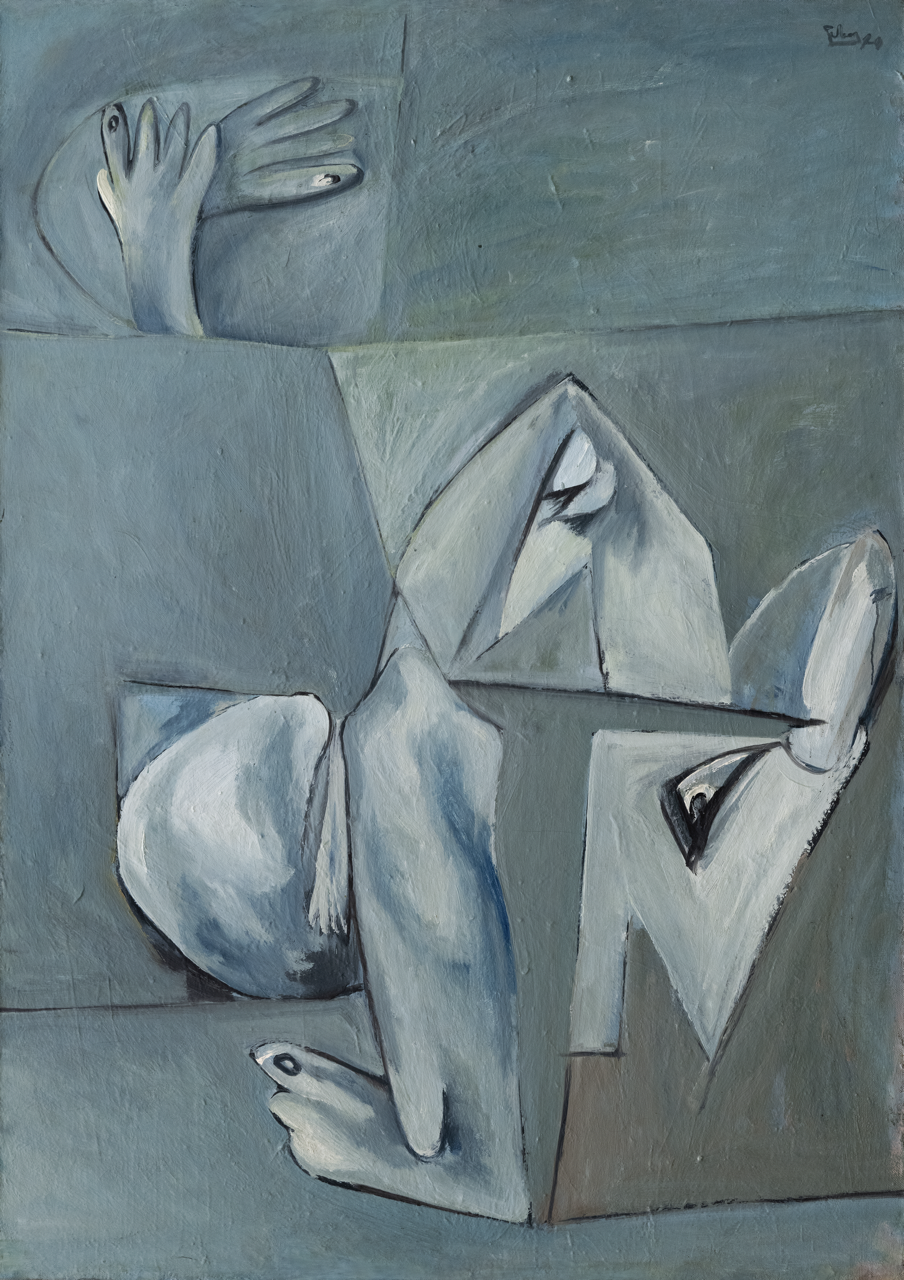
Sergo Chakhoiants. Composition. Canvas, oil. 150x106,5. 1990. This work is part of ATINATI Private Collection
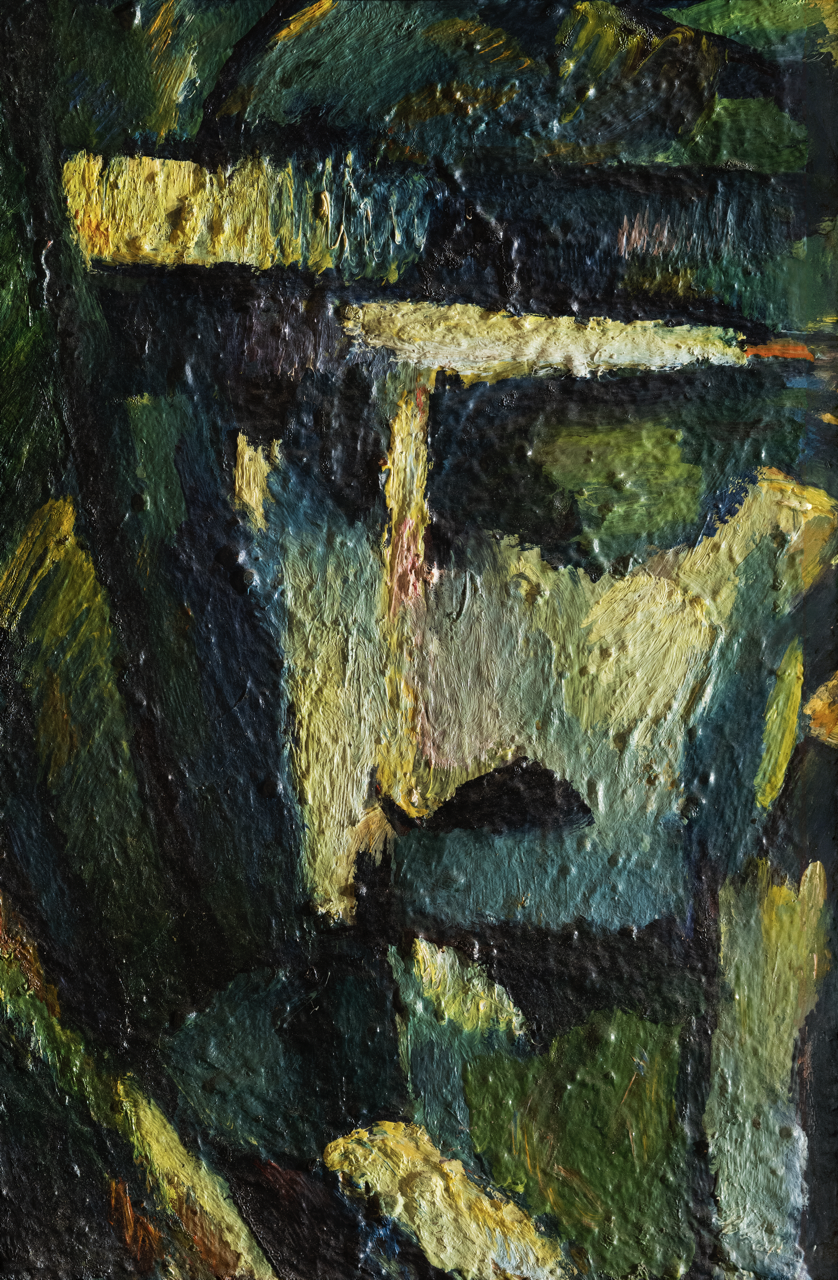
Sergo Chakhoiants. Pirosmani. Canvas, oil. 60,5x40,5. 1990s. This work is part of ATINATI Private Collection
In his abstract compositions, the artist develops his own patterns, evoking the imagery of prehistoric, archetypical, or shamanic ritual symbols and codes. Abstract patterns in Chakho’s work feature nuances, such as hypnotic circular movements, a sense of vertigo, natural torrents, and spiral-circular trajectories. These dynamic abstract motifs and stylizations are harmonized through a balance of fluidity and stability. These compositions express emotional impulses through a blend of polychromatic and monochromatic colors.
In Chakho's artistic universe, his graphic works adorn the planetary system of his paintings like stars. These pieces are primarily created using watercolor, gouache, sanguine, and mixed media techniques. In Chakho's nudes, portraits, still lifes, and abstractions, the beauty of life is never denied. On the contrary, the artist amplifies the idea and essence of beauty, emphasizing it with the phrase, "God is in the details" (Ludwig Mies van der Rohe). Chakho breaks down the visible world, beauty, and Man into the smallest fragments, finds them within this dispersion, and unifies them. In the context of global fine arts, Sergo Chakhoiants' graphic and pictorial works bear qualitative resemblances to those of Paul Cézanne, Georges Rouault, Edvard Munch, Franz Kline, Chaim Soutine, and others. His inclusion in this pleiad is conditional; the relations are qualitative, defined by shared attitudes in perception, execution, and a distinctive intensity that unites them on an artistic level.
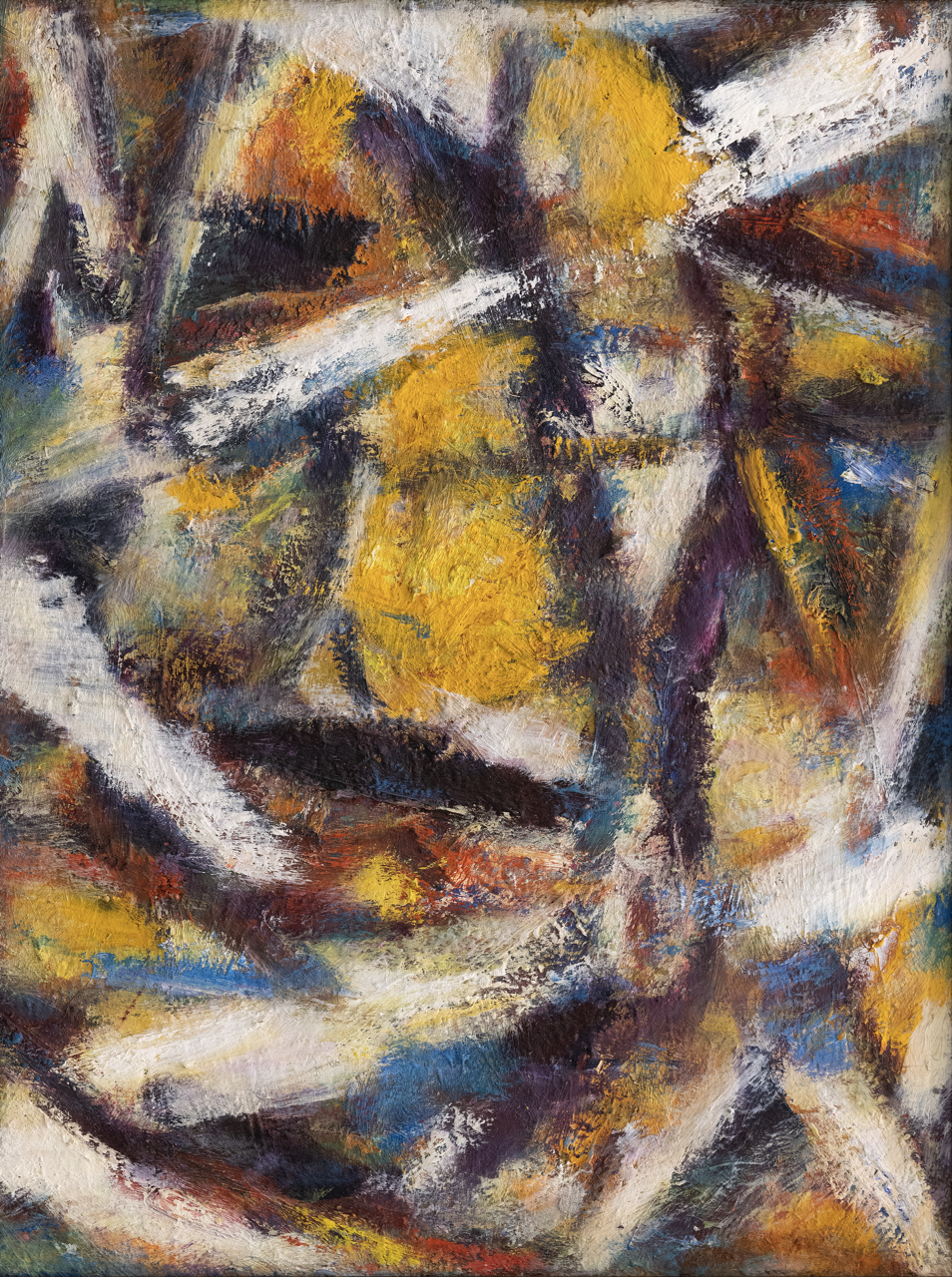
Sergo Chakhoiants. Composition. Canvas, oil. 79x59. 1990. This work is part of ATINATI Private Collection
Chakhoiants’ artistic psychotype bears a striking resemblance to the nameless, unknown, and greatest geniuses of the Paleolithic era, whose works are still preserved on cave walls. They saw art as a cognition of the fear of life, a language of communication expressing these emotions, and an instinct for self-preservation. Chakho shared his life experience with similar vulnerability and frankness. Using universal images, he tried to help us recognize and read his work so that we might comprehend that the world he sees and depicts is universal and humane; he is not alone. Like the abovementioned European artists, Chakho sought to understand the world in all of its components, including the idea of God, and present it to us not through direct figurative language, but through a qualitative essence. The "declassed" woman’s body, fruit, nature, geometric shapes, colors, and tones evoke new meaning and truth, emphasizing that their qualitative aspect is more essential than their superficial appearance.
P.S
The artistic world seen by Sergo Chakhoiants is the archaeology of his being. He excavates a unique relic by going deep into the earth’s layers. The gleaming of precious metals and stones concealed in the earth is like Chakho's pictures lost in the darkness and twilight - the order of things, people, beauty, and the realm of ideas.
Chakho passed away on the eve of Easter, 2009.